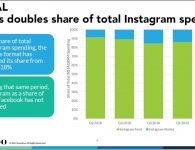
Today, most of what we think of as a computer uses digital technology. But that wasn’t always the case. From slide rules to mechanical fire solution computers to electronic analog computers, there have been plenty of computers that don’t work on 1s and 0s, but on analog quantities such as angle or voltage. [Ken Shirriff] is working to restore an analog computer from around 1969 provided by [CuriousMarc]. He’ll probably write a few posts, but this month’s one focuses on the op-amps.
For an electronic analog computer, the op-amp was the main processing element. You could feed multiple voltages in to do addition, and gain works for multiplication. If you add a capacitor, you can do integration. But there’s a problem.
A typical op-amp is fine for doing the kinds of things we normally ask them to do. For example, amplifying audio is a great use of an op amp. If the performance isn’t so good at DC or a few Hertz, no one will really mind much. But in an analog computer, low frequency or even DC signals are important and any offset, drift, or gain irregularities will affect your calculation.
One solution — the one used in this computer — is to incorporate choppers. A chopper essentially acts as a carrier frequency that is modulated by the input signal. The op-amp can now perform its task as an AC amplifier rather than a DC one, making it much more stable. At the end, another chopper reconstitutes the signal. While the analog computer in question did use ICs for the core op amps, the choppers and other circuitry to make them work well took up an entire board.
Programming is all done with patch cables. If you’d like to see more about how these worked, we talked about them earlier this year. We have to wonder, if digital computers didn’t work out, what the state of the art would be today in analog computing. After all, we had an analog laptop in 1959. Sort of.
read more at https://hackaday.com by Al Williams
Diy








